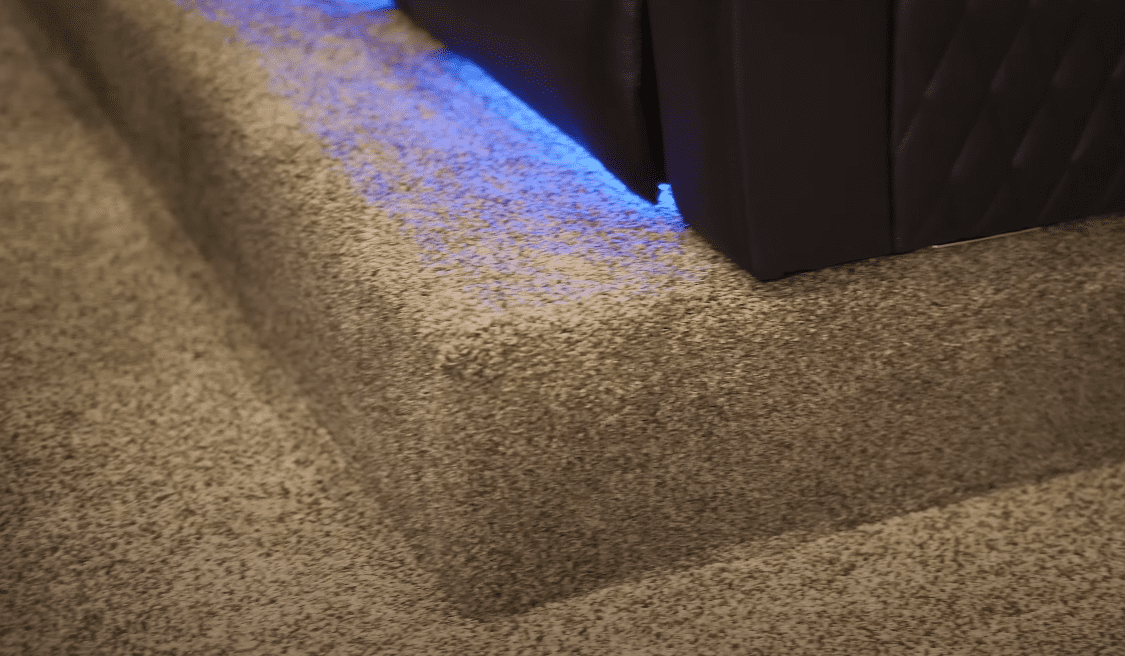Welcome to the world of ultimate home entertainment! In an era where staying in has become the new going out, creating a captivating home theater experience has gained immense popularity. When it comes to enjoying your favorite movies, TV shows, or sports events, nothing compares to the comfort and immersion offered by a well-designed home theater seating platform.

A home theater seating platform is more than just a few chairs arranged in a room; it’s an invitation to escape reality and indulge in the magic of cinema. Whether you’re a film enthusiast, a gaming aficionado, or a sports fanatic, designing and constructing a dedicated space that delivers an authentic theater experience can be a thrilling endeavor.
This comprehensive guide will walk you through the process of building your very own home theater seating platform. From the initial planning stages to the final touches, we’ll cover every aspect, ensuring you have the knowledge and inspiration to create a remarkable space that surpasses your expectations.
1. What is a Home Theater Seating Platform?
A home theater seating platform is a raised platform that allows for tiered seating in a home theater room, so also known as home theater riser. It creates a stadium-like seating arrangement, ensuring unobstructed views for all viewers. The platform is designed to optimize the viewing angles and improve the overall viewing experience.
Benefits of a Home Theater Seating Platform
There are several benefits to incorporating a seating platform into your home theater design:
● Enhanced Viewing Experience: By creating multiple levels of seating, everyone in the theater can enjoy a clear and unobstructed view of the screen, minimizing neck strain and ensuring an immersive experience.
● Increased Seating Capacity: a seating platform maximizes the use of available space by utilizing vertical space. It allows for more seats, accommodating a larger number of guests without sacrificing comfort.
● Improved Acoustics: the raised platform can contribute to better sound distribution throughout the room. The separation between the seating area and the floor helps reduce sound reflections and enhances the audio quality.
Factors to Consider Before Building
Before embarking on building a seating platform, there are a few factors to consider:
● Room Size and Shape: Assess the dimensions and layout of your room to determine the optimal placement and size of the seating platform. Consider the distance from the screen, speaker placement, and any potential obstructions.
● Building codes and Safety Regulations: Familiarize yourself with local building codes and regulations related to constructing a raised platform. Ensure compliance with safety requirements, including fire safety measures and proper weight-bearing capacity.
● Budget: Determine your budget and allocate funds for materials, seating options, and any additional features or accessories you plan to incorporate into your home theater.
2. Step-by-Step Guide To Build Home Theater Seating Riser Platform
Want to know how to build a seating raiser platform in your home theater? Follow these steps:
Step 1. Design and Planning
Assessing the Space
Begin by measuring the dimensions of your home theater room. Consider the ceiling height, wall-to-wall distance, and any architectural features or obstructions that may impact the design. Sketch a floor plan to visualize the seating arrangement and the platform’s dimensions.
Determining Optimal Seating Configuration
Decide on the number of seats you want to accommodate and their arrangement. Consider factors such as seat spacing, seat width, and legroom. Optimal seating configurations provide comfortable viewing angles and sufficient space for movement between rows.
Selecting the Right Materials
Choose sturdy and durable materials for constructing the seating platform. Common materials include plywood, lumber, and steel. Ensure the materials can support the weight of the platform, seats, and viewers. Consider incorporating sound-dampening materials to minimize vibrations and sound transmission.
Design Considerations
Take aesthetics into account when designing your seating platform. Consider incorporating decorative elements such as trim, molding, or LED lighting to enhance the visual appeal of the platform. Additionally, think about integrating features like built-in storage compartments or cup holders to enhance functionality.
Step 2 – Building a Home Theater Seating Platform
Preparing the Room
Clear the room of any furniture or obstructions. Ensure the floor is clean and level. Mark the desired location for the platform using painter’s tape or chalk lines.
Building the Frame
Begin constructing the platform frame by securing the perimeter with lumber or steel beams. Use a level to ensure the frame is even and secure. Add cross beams or supports to reinforce the structure and prevent sagging.
Reinforcing the Structure
To strengthen the platform, add additional bracing and supports as needed. Consider using diagonal supports to provide stability and prevent wobbling. Double-check that all connections are secure and that weight-bearing capacity is sufficient.
Adding Sound Isolation
To improve sound quality, add sound-isolating materials between the platform and the floor. Use materials such as mass-loaded vinyl, acoustic isolation pads, or rubberized mats to minimize vibrations and sound transmission.
Installing the Platform Surface
Place a layer of plywood or another suitable material over the frame to create the platform surface. Secure the surface using screws or nails, ensuring it is firmly attached to the frame. Sand the edges and corners to create a smooth finish.
Carpeting and Finishing Touches
Cover the platform surface with carpet or another suitable flooring material. Choose a carpet with good acoustic properties to further enhance sound quality. Install baseboards or trim to provide a finished look. Consider adding decorative elements or personal touches to make the seating platform unique to your home theater.
Step 3 – Seating Options
Choosing the Right Home Theater Seats
Select seating options that prioritize comfort and durability. Look for seats with high-quality upholstery and ample cushioning. Consider features such as adjustable headrests and lumbar support for added comfort.
Single Seats vs. Sectionals
Decide between individual seats or sectional seating based on your preferences and the available space. Individual seats offer flexibility in arranging and configuring the seating layout, while sectionals provide a cohesive look and can accommodate larger groups.
Reclining and Motion Seating
Consider incorporating reclining or motion seating for added luxury and comfort. Reclining seats allow viewers to adjust their position, while motion seats can provide a dynamic and immersive experience by synchronizing with on-screen action.
Seat Arrangement and Spacing
Ensure sufficient spacing between seats to allow for ease of movement and comfortable legroom. Provide appropriate armrest spacing to maximize individual comfort. Optimal seat arrangement should provide clear sightlines to the screen from all seating positions.
Step 4 – Lighting and Accessories
Ambient Lighting
Install appropriate ambient lighting to create a comfortable and immersive viewing environment. Consider using dimmable wall sconces, LED strips, or recessed lighting to enhance the ambiance while minimizing glare.
Step Lighting
Incorporate step lighting to ensure safe movement between different seating levels. LED strip lights or low-profile fixtures can be installed along the stairs or under the platform’s edge to provide sufficient illumination without causing distractions.
Cup Holders and Tray Tables
Include cup holders and tray tables in your seating platform design for added convenience. Cup holders can securely hold beverages, while tray tables provide a surface for snacks and personal items.
Acoustic Treatments
Integrate acoustic treatments such as sound-absorbing panels or diffusers into your home theater space. These treatments help minimize echo, reverberation, and unwanted reflections, enhancing sound quality and creating a more immersive audio experience.
Step 5 – Technology Integration
Speaker Placement
Strategically position your speakers to optimize audio performance. Place front speakers at ear level and ensure proper center channel alignment. Consider wall-mounted or in-wall speakers to save space and maintain a clean aesthetic.
Wiring and Cable Management
Plan for proper wiring and cable management to ensure a clutter-free and organized setup. Conceal wires using in-wall cable raceways or wire molding. Use labeled cable ties or cable management systems to keep cables organized and easily accessible for maintenance.
Smart Home Integration
Integrate your home theater seating platform with smart home technology for added convenience. Automate lighting, temperature control, and audiovisual equipment using voice commands or mobile devices to create a seamless and immersive experience.
Step 6 – Safety and Comfort Considerations
Fire Safety Measures
Adhere to fire safety regulations when constructing your home theater seating platform. Ensure that your platform materials and finishes are fire-resistant and that you have proper fire extinguishing equipment readily accessible.
Comfort Enhancements
Consider additional comfort enhancements, such as adding plush seating cushions or adjustable headrests. Incorporate proper ventilation and temperature control to ensure a comfortable viewing environment.
Step 7 – Maintenance and Care
Regular Cleaning
Regularly vacuum and clean the seating platform and upholstery to remove dust and debris. Follow manufacturer guidelines for cleaning and maintenance to preserve the longevity and appearance of the seating.
Upholstery Maintenance
Attend to any spills or stains on the upholstery promptly. Use appropriate cleaning methods or consult professional upholstery cleaners if necessary. Avoid placing sharp objects or exposing the seating to direct sunlight to prevent damage.
Equipment Maintenance
Maintain and service your audiovisual equipment regularly to ensure optimal performance. Clean projector lenses, replace projector bulbs as needed, and clean or replace air filters. Follow equipment manufacturer guidelines for proper maintenance procedures.
By following this comprehensive guide, you will be well equipped to create your dream home theater seating platform. The comfort and immersive experience it provides will undoubtedly transform your home theater into a cinematic haven. Remember to consider your personal preferences, optimize the layout, select quality materials, and pay attention to detail during the construction process. With dedication and careful planning, your home theater seating platform will undoubtedly become the envy of your friends and family, delivering countless hours of entertainment and relaxation.

